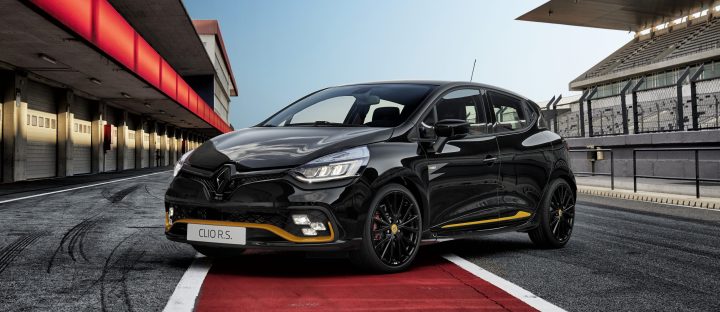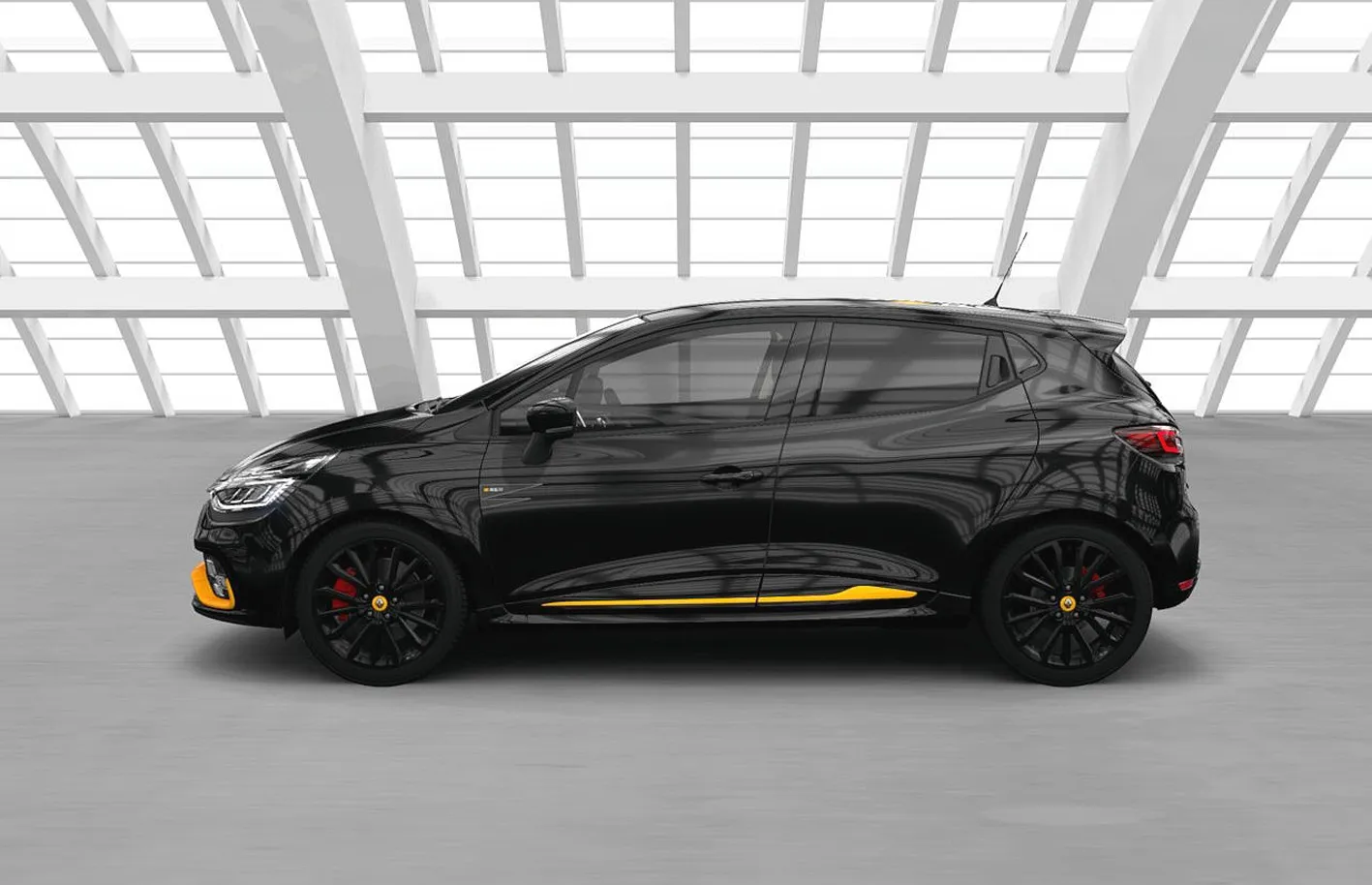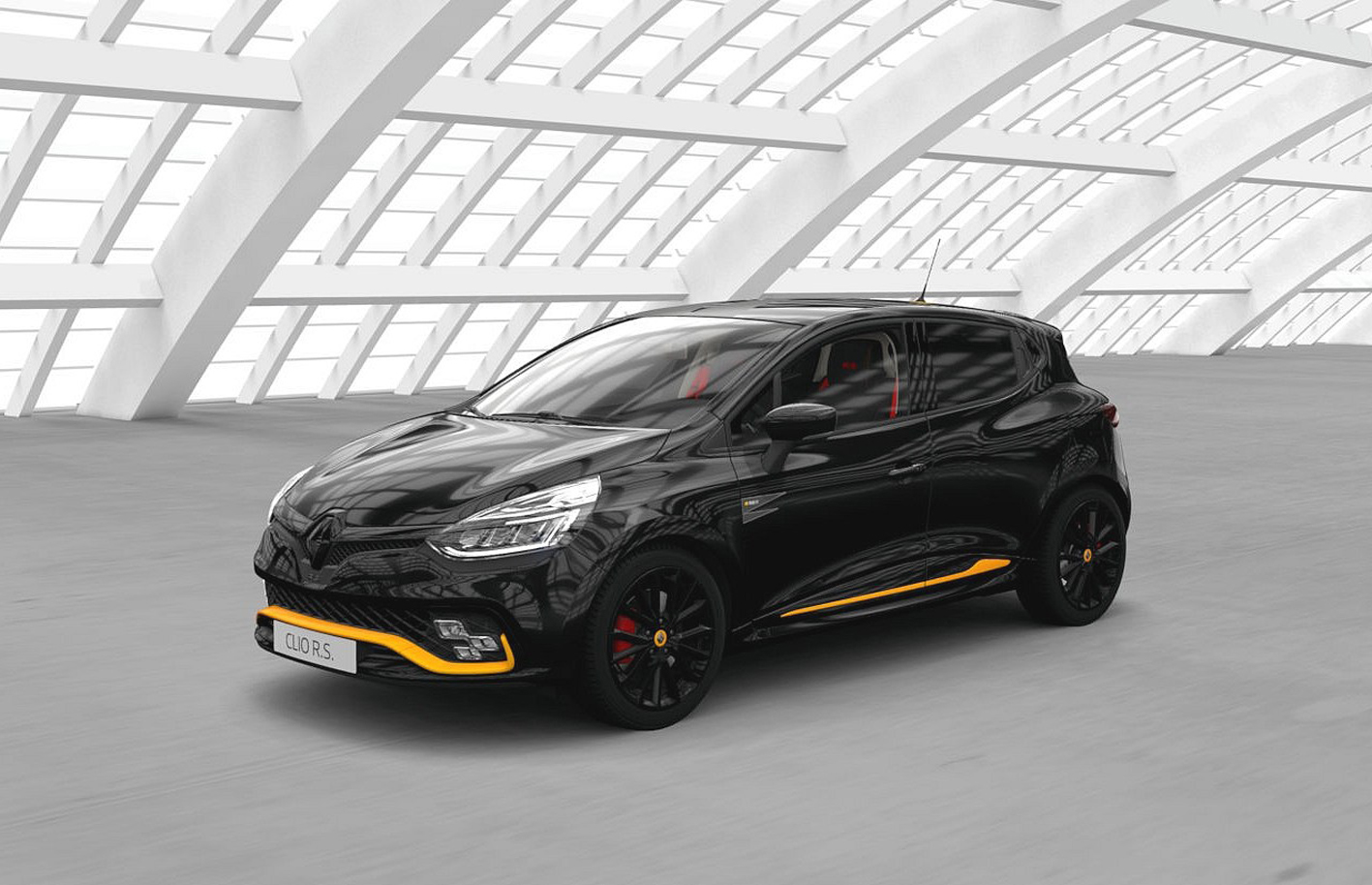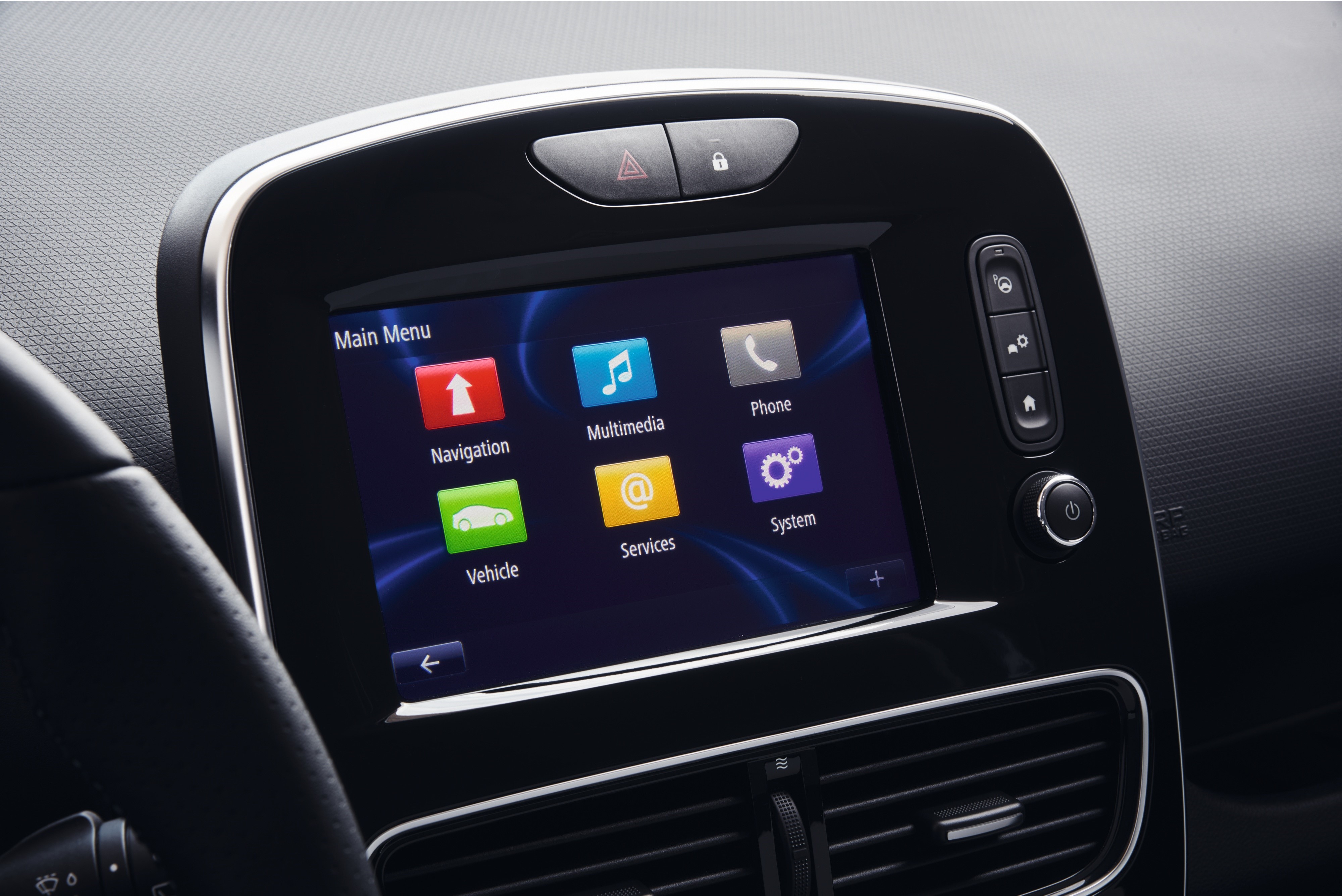MOTORING
Renault Clio RS 18 F1: A mighty midget

Dynamite comes in small packages – and the Clio RS 18 F1 is a good case in point. What started out as a humble runabout has been transformed into a fiery hatch with very real performance credentials. But is its talent set broad enough to allow for everyday motoring, too?
Small hatchbacks are a dime a dozen, and they represent a large slice of passenger vehicle sales in South Africa. The reasons aren’t hard to find: they’re relatively affordable and economical, while their compact dimensions make for easy road manners.
The Renault Clio is a typical example, but it confidently exudes a welcome individuality that’s often sorely lacking in mainstream hatchback designs. Even base model versions look smarter and sexier than the norm.

There’s more to Renault – and the Clio – than mass-market models. The French brand has a long tradition of motorsport success, spanning anything from rallying and one-make racing to Formula One. Renault’s in-house performance division, Renault Sport, ensures that some of that motorsport expertise filters down into its production models under the RS (for Renault Sport) moniker. The Clio RS 18 F1 is one of the most recent additions to the RS stable.
The rather clunky designation is a reference to Renault’s 40-year history of involvement in Formula One, which harks back to 1988. It also happens to be the same nomenclature as the current Renault F1 car campaigned by Nico Hulkenberg and Carlos Sainz.
To be honest, the link between the F1 car and this hot-hatch Clio is a little tenuous. The Clio RS 18 F1 has a black-and-yellow colour scheme inspired by the F1 car’s livery. And both cars are powered by 1.6-litre turbo engines. But really, that’s where all similarities end.

In essence, the RS 18 F1 is a limited-edition version of the standard Clio RS220 Trophy. In technical terms, it means the little hatch gets a bespoke four-cylinder turbo engine fettled to deliver a wholesome 162kW of muscle.
Add the 280Nm of torque, factor in a kerb mass of only 1,172kg, and you have a recipe for real get-up-and-go. The gearbox is a six-speed dual-clutch design, feeding the engine’s urge to the front wheels.

What? No manual transmission option? Purists will be disappointed, but dual-clutch gearboxes tend to be more efficient, while those shift paddles do endow gear changes with a racier feel.
Drivetrain apart, the Clio RS rides on a lower, stiffer suspension, while the wheels are gloss-black 18-inch alloys shod with sticky Michelin rubber. Upgraded disc brakes front and rear recognise the need to match stopping power to the Clio’s elevated performance.

The cockpit is racy, too. Black is the dominant hue, with crimson detailing and some aluminium brightwork (including alloy pedals) adding some welcome visual interest.
The heavily bolstered bucket seats feel firm but comfortable, while the thick-rimmed steering wheel neatly frames analogue dials and a digital speedometer. The large shift paddles behind the steering wheel are fixed, by the way, and don’t rotate with the steering wheel.

It may be F1-inspired, but there’s no shortage of creature comforts in the RS 18 F1’s cabin. The centre stack is home to a 7-inch touchscreen that looks after the Clio’s full-house infotainment system.
Apart from Bluetooth-based hands-free telephony and audio streaming, there’s also satnav, FM/AM radio, USB and stereo jackplug connectivity. Add aircon, remote central locking with keyless access, cruise control and heated seats, and the RS ticks most of the nice-to-have boxes.
The problem with performance-focussed road cars like this Clio RS is that they can often end up being compromised from a day-to-day driving perspective.

While it’s fun to head for the hills on an early weekend morning, and to blast the cobwebs away on a quiet country road, most RS owners will also need to commute, fetch and carry kids, and embark on the occasional long-distance holiday trip.
Here’s the good news: the Clio RS might look like a three-door, but it actually has two rear doors, with the door latch cleverly concealed in the C-pillar. Rear seating is less cramped than expected, too, making the little Renault a lot more practical than expected.
At 300 litres, the boot isn’t huge, but it’s useful, and you can always fold the split rear bench seat flat to increase cargo space if necessary. Plus, the Clio is one of the safest hatches in its class, with a five-star Euro-NCAP rating and a raft of active and passive safety features.

So yes, the Clio RS looks like a viable everyday motoring solution from a space, practicality and safety perspective. But there are also some notable compromises.

Hit the start button, and the bespoke Akrapovič exhaust system’s resonant vocals act as an instant reminder that this is a performance car first and foremost. It’s a sound that suits the RS persona, but can be intrusive.
The 1.6-litre turbo engine is a delight, revving to the redline with alacrity, and producing plenty of shove. In absolute terms, 6.6sec for the 0-100km/h sprint is swift rather than race car rapid, but the Clio’s reactions to throttle, brake and steering inputs are certainly incisive, and the line of communication between car and driver is unambiguously direct.
It scorches off the mark with real glee, while in-gear acceleration is equally enthusiastic. The lower, stiffer suspension ensures you know exactly what the Clio is doing, and despite its electric assistance, the steering feels reasonably communicative.

This is a car that loves attacking sweeps and bends, curves and corners, fast or slow, wide or narrow. It slices through mountain passes with surgical precision, while maintaining exceptional levels of composure and control.
It’s not so much about driving fast in the Clio RS as it is about exploring the car’s agility and wieldiness. No matter how sinuously treacherous the ribbon of tar being negotiated is, the Clio sticks to the chosen line with thrilling tenacity.

At this point, it’s worth mentioning that the RS 18 F1 has three driving modes: Normal, Sport and Race.
Normal is meant to be for day-to-day use, and softens the hatchback’s reactions. Sport should be the default setting, ensuring crisp throttle response, a heftier helm, and snappier gear changes.
Opt for Race mode, and you can use launch control to propel the Clio off the line with optimum alacrity, while the stability control’s electronic safety net is cast a little wider, allowing more slip and drift (ie more fun) before it intervenes.

The EDC gearbox is at its best in Sport mode, delivering the quick and precise shifts you’d expect of a performance car. Using the shift paddles is a must though, adding further driver engagement and driving enjoyment.
In the normal setting, the gearbox can be a little hesitant, however, especially in the lower three gears. Opting for full auto mode is useful in stop/start traffic, but the Clio never feels completely at ease in those conditions, and assuming manual control remains the better option.
Compared to a bread-and-butter Clio, the taut suspension and low-profile tyres definitely compromise ride refinement. And at highway speeds, there’s a lot more road and engine noise to contend with.

That said, I’d be disappointed if that wasn’t the case: you want this car to look, to sound, to feel the RS part.
The collectability of the RS 18 F1 version, and its unique livery, are also significant drawcards. And on a purely practical level, the Clio can go about its commuting business as competently as any average Clio.
Best of all, the Clio RS driver is likely to have more day-to-day driving fun than owners of exotics or hugely powerful muscle machines. Those cars have to be driven at levels beyond the scope of normal road conditions to be fully appreciated.
The Clio RS can be flung about at far more pedestrian speeds, and still be enjoyed to the full. It offers a lot of entertainment value, even in day-to-day driving.
Add five-door practicality, five-star safety and reasonable running costs, and suddenly, the Clio RS 18 F1 makes a lot of sense –if you’re a petrolhead with an appetite for adrenalin, that is. DM
PROS: A lot of driving fun in a surprisingly practical package. Collectible, too.
CONS: For most, the much cheaper, less frenetic Clio GT-Line will make more sense.
VITAL STATS



















 Become an Insider
Become an Insider